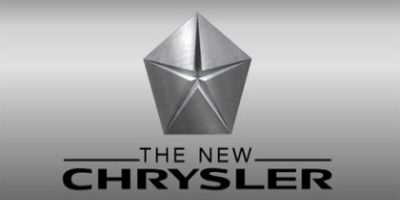For some time, we’ve been posting information about the financial position of Chrysler, LLC and how utterly dismal it is turning out to be. We’ve outlined the effect that Cerberus’ financial problems and those of the credit market in general are likely to have on Chrysler.
Those who make the cars, after all, have to matter to those of us who enjoy cars.
In what is perhaps the most explicit recent comment on Chrysler in a financial blog, Financial Week is now saying exactly the same thing we’ve posted here, before: Chrysler is in a lot more financial trouble than they’re letting on.
Here’s the picture Financial Week paints:
Chrysler has $10 billion in cash.
That’s it.
They have no way to get more, because the banks are still trying to peddle – with absolutely no success – the bonds issued to pay for the original Cerberus deal with Daimler.
The $10 billion figure comes from information leaked after a presentation made by Cerberus and Chrysler to potential investors last month, before Chrysler president Robert Nardelli said the company would lose 1.6 billion this year. Nardelli has also said that the company will not diminish its capital investments, which were $3.7 billion this year.
The $10 billion number is stunning.
There does not, in any realistic appraisal of the company’s situation, seem to be any way that Chrysler, LLC can make it.
Some market analysts are suggesting that Cerberus got caught out by the credit crunch, that Cerberus (despite claims at the time to the contrary) always planned to cut costs to puff up a profit and then sell the company, a “flip” in the parlance of the investment trade. The theory is that Cerberus counted on the new minivan and the upcoming new Dodge Ram to give them cash flow, and on the just-concluded UAW talks to cut their costs. They figured they’d be able to make a relatively quick profit that way, getting additional money as needed by borrowing. But, when the credit markets dried up, Cerberus was stuck with the prospect of actually having to run the company, for which they were unprepared and had no plan.
It’s certainly beginning to look that way, anyway.
Rumors linking Chrysler, LLC to other companies have started to
float. One has VW buying Chrysler as a quick way to increase penetration in the North American market. Another has Nissan and Chrysler linking to build complementary products. (Yesterday, an official of Nissan seemed to deny any such deal might be in the works, but when specifically asked about a manufacturing deal with Chrysler, declined to comment further.) Nissan has a small car platform that it could sell to Chrysler and Chrysler has been desperately searching for one that’s already been developed by someone else that it can buy.
But, Chrysler’s in such bad shape that neither VW nor Nissan may be in any hurry to link with the company.
That $10 billion number is probably soft.
It is not clear whether that $10 billion number includes the cash that Chrysler has promised to the UAW to fund the new health care VEBA to which Chrysler, in common with other car manufacturers, agreed in contracts signed this fall. That payment isn’t due for about two years, at least not in full. But the Chrysler contribution has been estimated at about $5 billion.
It’s also not clear whether that $10 billion includes the $2 billion that Daimler is obliged to loan to Chrysler, if requested. Reports are that the request has been made, but it’s not clear whether the check has been cashed.
But, even being incredibly optimistic – that is, assuming that Chrysler can get another $2 billion from Daimler and that it’s already reserved its entire VEBA contribution – that still means the company has only $12 billion to play with.
From that deduct the $3.7 billion in capital expenses.
Now it’s 8.3 billion.
If the two optimistic assumptions just mentioned are both wrong, then Chrysler’s effectively out of cash: it would be down to 1.7 billion at the end of 2008. That’s about the size of the loss they expect in 2007. Their turn-around plan calls for breaking even next year. If, however, they match this year’s loss in a diminishing car market, then at the end of 2008, they’d be down to $100 million, which isn’t next month’s payroll at a company as large as Chrysler.
The car business is not kind to undercapitalized companies. At a price tag of $5 billion and a timetable of five years to develop and bring to market a completely new platform, the rosiest scenario at Chrysler gives them only enough cash to develop one new platform. Unfortunately, it seems unlikely that they can tread financial water long enough to get the five years lead time needed to do it.
And, of course, implicit in all of this is that the next new Chrysler platform won’t cost more than most and will be a very, very big hit. Neither of those premises are likely to be reliable: between meeting new fuel standards and anticipating the market in light of them, Chrysler’s likely to be spending more and gambling more in building a car for the future. That future is much more of a moving target than it’s ever been and Chrysler cannot afford anything but a bull’s eye. That kind of risk requires some very high levels of expertise – exactly the kind of expertise that Chrysler has been systematically eliminating from the company by early retirement of white collar workers.
But, here’s the real kicker for Chrysler:
At some point, buyers will begin to expect the company to go broke.
At that point, they will stop buying Chrysler products, at any price.
Orphans don’t sell at a discount.
They just don’t sell.
Of course, there’s always Tata.
They might buy it.
But not for what Cerberus paid.

